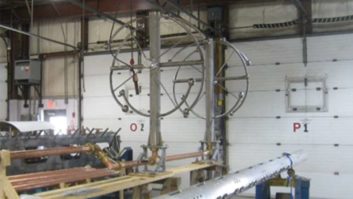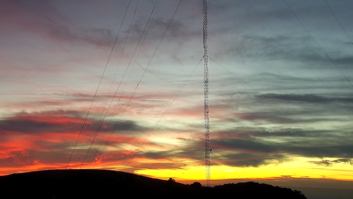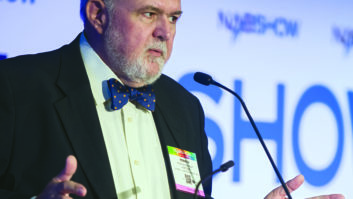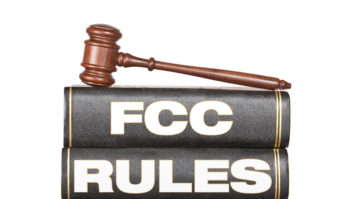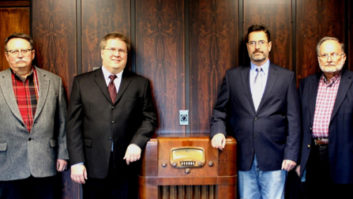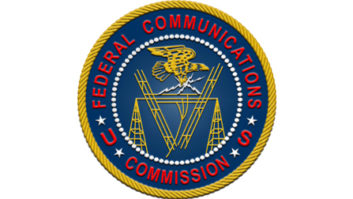Method of Moments Modeling
Feb 1, 2012 2:00 AM, By Kevin McNamara
It seems like yesterday, long before there were handheld GPS units, smart phones and even Google Maps that my staff and I were prepping for another set of proof of performance measurements. Drawing radials, plotting points and digging through the mostly unreadable original proof of performance that provided concise directions to points that were now located in the middle of a new freeway. In February 2009 the FCC formally permitted the use of Method of Moment (MoM) modeling, which allows the use of specialized software to predict the patterns of AM arrays, assuming they meet certain criteria.
Computational Electromagnetic Modeling (CEM)
The theory behind determining the behavior of electromagnetic energy utilizing computer modeling techniques has been around since the 1950s, although having the computational horsepower to process the calculations was limited to very few government and academic institutions. CEM became more practical in the 1980s with the introduction of small, relatively inexpensive desktop PCs. In the 1960s scientists and engineers devised computational electromagnetic codes that were used in the development of military and commercial satellite antennas. The computer program was named Antenna Modeling Program in the early 1970s. As the program was enhanced to support a broad range of military applications, the name was changed in 1977 to Numerical Electromagnetics Code (NEC). You may recognize, or even have used the modern version of this program of which many variations of the original program is offered as free open source software package called MiniNEC.
There are websites that offer free and low-cost versions of the full NEC package as well. While the basic algorithms of the NEC code is used in the various versions, the major difference in these packages are typically the design of the user interfaces, which are tailored to a specific type of design objective (i.e. Yagi antennas). If you haven’t had a chance to use one of the versions of NEC, I would suggest you search the net and download a copy, particularly if you are interested in antenna design or and amateur radio operator looking to “home-brew” something. There is also a great deal of free documentation and tutorial for these programs online.
Does your antenna system qualify?

The Numerical Electromagnetics Code is the basis of the Methods of Moments proof. This SBE publication provides more details.
The specific requirements for performing a proof of performance using MoM are spelled-out in 47CFR73.151(c) of the FCC regulations. They are very specific as to the type of antenna array that qualifies for MoM modeling. Here are the key points to consider:
> Series fed or top-loaded series fed directional antenna systems only. Folded unipole and sectionalized antennas are excluded.
> Standard (buried) ground system per 47CFR73.189(b)(4), which states:”The ground system should consist of buried radial wires at least one-fourth wave length long. There should be as many of these radials evenly spaced as practicable and in no event less than 90. (120 radials of 0.35 to 0.4 of a wavelength in length and spaced 3 [deg] is considered an excellent ground system and in case of high base voltage, a base screen of suitable dimensions should be employed.”
> The tower spacing and orientation must be within 1.5 electrical degrees (at the operating frequency of the station) of the original approved locations. This must be surveyed and certified by a licensed surveyor. Any variation from this could be corrected with a subsequent application for construction permit to change the physical and/or operating parameters, providing no interference is created. Formerly licensed facilities are exempt from the survey requirement providing there has been no change in the authorized or theoretical pattern.
– continued on page 2
Method of Moments Modeling
Feb 1, 2012 2:00 AM, By Kevin McNamara
If using base sampling, you are required to perform base impedance measurements on each tower with the other tower(s) open or short-circuited. The modeled tower impedance must agree with the measured impedance �2O and �4 percent of resistance and reactance.
Impedance measurements must also be performed on sample lines with the sample device connected. 47CFR73.155 (a) describes the requirements for both base current and sampling loop methods.
Typically MoM modeling of an antenna is represented by one or more vertical wires, which represent the actual radiator. The FCC permits a variation of the modeled tower to be 75 percent to 125 percent of the physical tower height.
Adjust the antenna monitor to agree with the data derived from the measurements performed for the MoM matrix. 47CFR73.151(c) (2) states “The computer model, once verified by comparison with the measured base impedance matrix data, shall be used to determine the appropriate antenna monitor parameters.”
The antenna monitor must be calibrated per the manufacturers test procedure and a certificate or statement of calibration must be submitted with the application.
The appropriate fees must be submitted with the application for approval to use the MoM proof of performance going forward.
You will still need to make some measurements
Even after you have been approved to use the MoM proof of performance, there is still a requirement to establish and document a minimal amount of monitor points along radials that define the minimum and maximum areas of the pattern. 47CFR73.151 (3) states “Reference field strength measurement locations shall be established in directions of pattern minima and maxima. On each radial corresponding to a pattern minimum or maximum, there shall be at least three measurement locations. The field strength shall be measured at each reference location at the time of the proof of performance. The license application shall include the measured field strength values at each reference point, along with a description of each measurement location, including GPS coordinates and datum reference.”
You will also need to recertify the antenna monitoring system every two years in order to be in compliance with the current rules.
The question of whether the expense of converting to the MoM proof is worth it depends on many factors, including the age of your system. Typically this would make the most economic sense for newly constructed systems or older systems that are updating RF infrastructure; however existing operations with limited technical resources may also find the savings in time alone worth the initial effort.
McNamara is president of McNamara Associates, Cape Coral, FL.
February 2012
WAOK uses Method of Moments modeling, IBOC update, the Tieline Bridge-IT is taken on the road, and new EAS rules are released….






